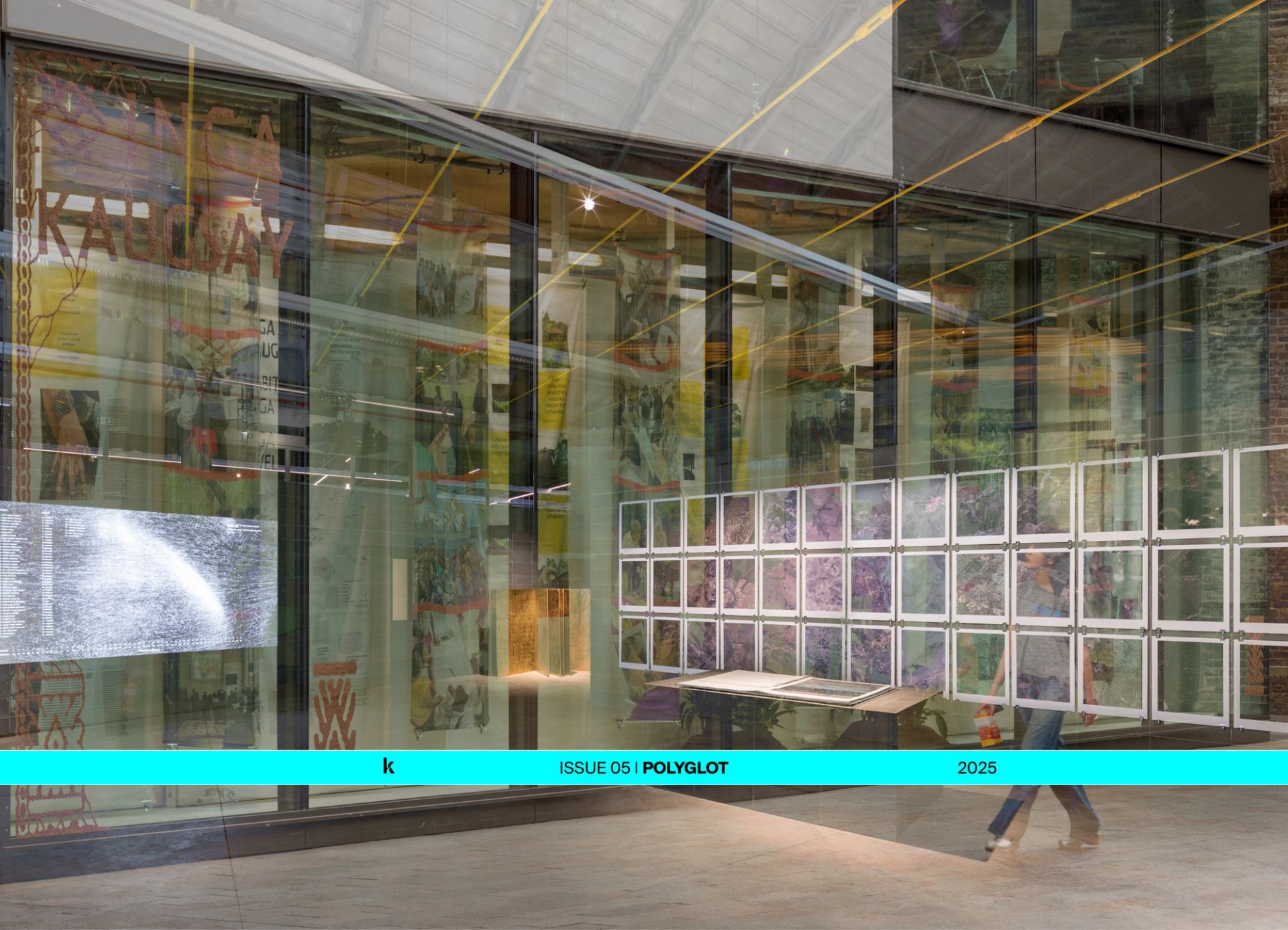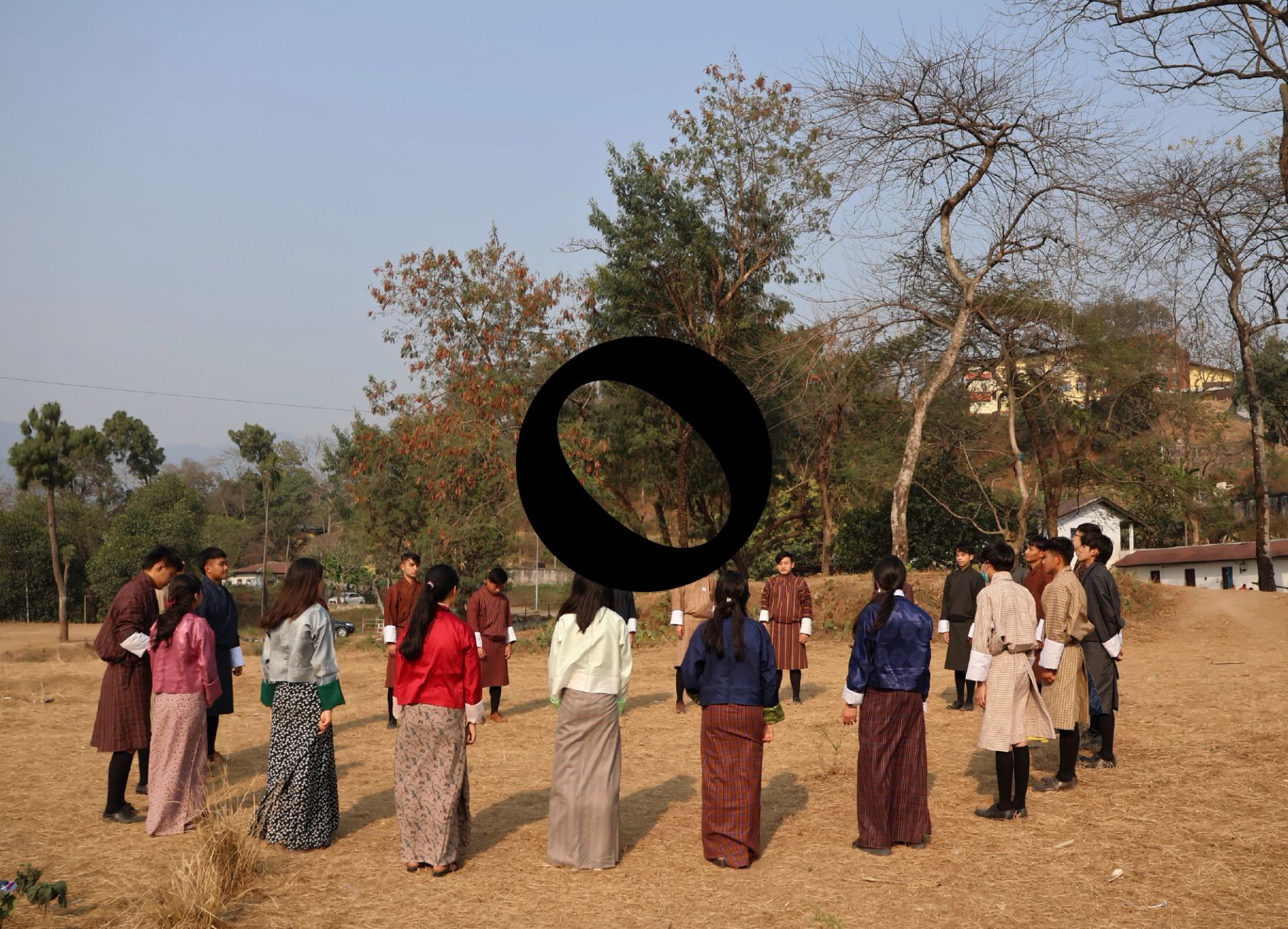The rate of rickets has been reported to be the highest in 60 years. Our bones, our bodies and our landscape are losing calcium. The project looks at calcium, a substance essential for the functioning of all living organisms. Through using a multitude of scales as mapping tools, the project aims to uncover the timeline of calcium metabolism, drawing parallels between calcium formations in the architecture of the cell and the architecture of our built environment. With particular focus on the Victorian era, mid-1900s and current era, the project examines how our relationship with calcium shapes not only the structure of our bodies and bones but our homes, cities and landscape.
The landscape is losing calcium. In the Peak District we are seeing massive areas of disrupted land appearing as abandoned wastelands. Focusing on Middle Peak Quarry, an abandoned limestone quarry in Derbyshire, the project analyses the calcium potential of the site, through experimenting with materials and analysing its geology. Whilst there is such an abundance of calcium in the landscape, very little of it enters the bodies of those living in close proximity. A high percentage of the UK’s most deprived 10% live in the surrounding cities and are first to experience calcium deficiency today due to health inequalities, food poverty and indoor living.
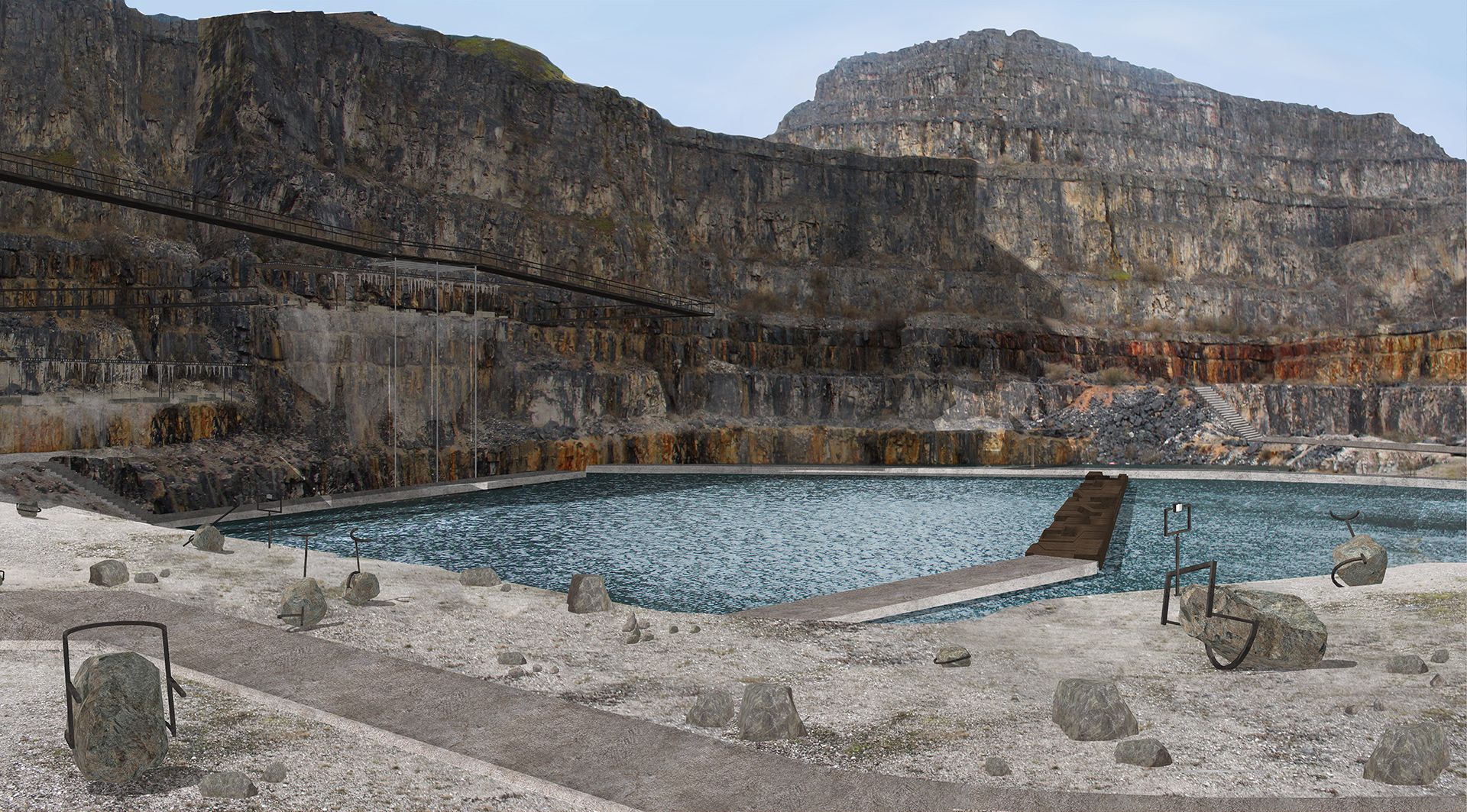
Performance is used as a critical tool to rethink architecture and help uncover new strategies for addressing the challenges faced by calcium deficiency. The movements of the cell, the bone and the quarry are directly affected by our relationship with the substance, and performance opens up opportunities to new ways of designing, where environment and movement are symbiotic. Using this tool as a basis, two notation systems were designed, one for the body and one for the landscape to record the performance of the existing site and opportunities for a new landscape strategy based on calcium rehabilitation. The geological notation refers to elements on the site that contributes to it’s calcium deficiency, whilst the notation for the body references bones and joints. The visual language represents the spatial and temporal qualities of the site, a written form of architectural space, transcribing the interactions between space, movement and calcium.
Learning from the cellular process of remodelling, the project questions architecture’s role in remodelling the post-industrial body and landscape. The concept of the interventions is centred around the rehabilitation of the quarry and of the body through the implementation of support structures. These are prosthesis of the landscape or body, responding to their condition to support the production of calcium whilst challenging traditional practices of correction and repair.
Calcium metabolism, health and the built environment are inextricably linked, and as our relationship with substances such as calcium changes, our environment alters also. A new support system is required for this metabolic era; a system which can and ought to adapt as our relationship with calcium continues to change.
The project was developed within the context of the Royal College of Art.
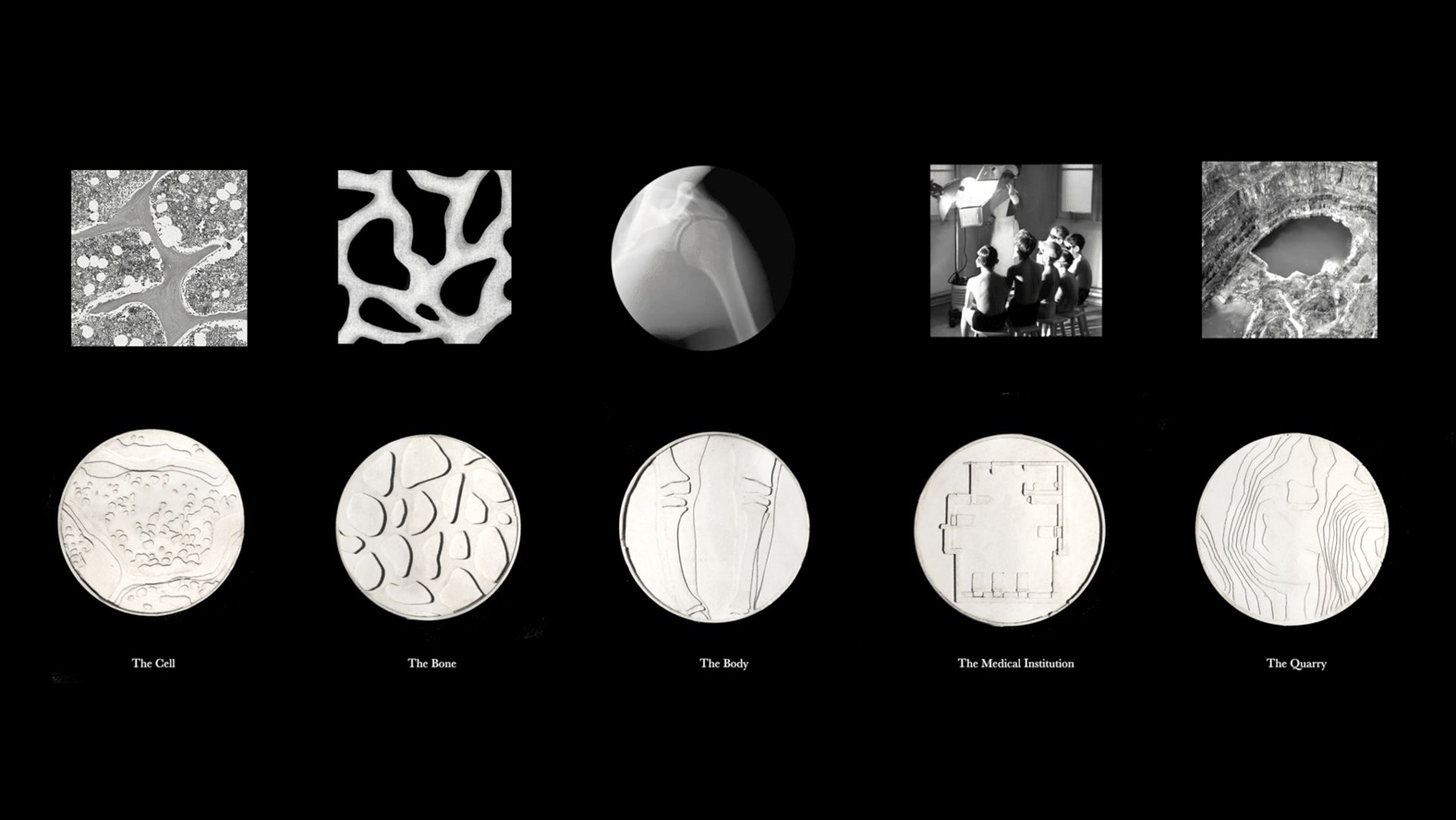
KOOZ What prompted the project?
RH The theme of my ADS, titled Metabolising the Built Environment, looks at mapping substances in order to understand how modernity and urbanisation spreads them across the Earth. Focusing on calcium, the project uncovers how the substance has been absorbed by different bodies and, as a result, changed the structures in and around us. This has become increasingly relevant due to the re-emergence of Rickets, a Victorian disease which is recognised by the deformity of bones caused by a lack of calcium. Whilst the mid-1900s transformed our relationship with sunlight and food through the invention of light therapy, seaside resorts, more spacious homes and food fortification, we are now living in an era of calcium deficiency where more than half the adult population is deficient in vitamin D, a substance vital for normal calcium metabolism. A new age of metabolic disorders has emerged. Calcium’s metabolic pathway is entangled in social, political and environmental issues which bring about new challenges and questions regarding the embodiment of substances, circular trajectories and spatial implications.
KOOZ What research texts and case studies informed the project?
RH The scholarly work of Hannah Landecker helped inform my understanding of metabolising bodies and the absorption of substances through her analysis on the industrial and post-industrial metabolism. In X-Ray Architecture, Beatriz Colomina explores the impact of the development of the x-ray on shaping twentieth-century architecture. Her analysis on the relationship between medical discourse and the built environment formed a guide as to how to approach calcium deficiency in the body and the landscape. The work and research of performance artists and architects such as Diller + Scoffido and Oskar Schlemmer challenge the possibilities of spatial representation and design through notions such as spectatorship and participation. The relationship between body, movement, time and space is notably explored in Lawrence and Anna Halprin’s work, whose collaborative explorations look at how bodies and space inform one another and how the built environment can be choreographed in the form of scores. Studying existing notation systems led to my own interest in designing a score as a tool for analysing the site and choreographing the performance of the quarry in relation to calcium.
The initial stages of research centred around mapping calcium’s metabolic pathway and it became clear the network branched beyond the scale of the body and landscape.
KOOZ What defined the five scales through which the project operates? How do these operate singularly and as a network?
RH The initial stages of research centred around mapping calcium’s metabolic pathway and it became clear the network branched beyond the scale of the body and landscape. The scales I explored are the cell, the bone, the body, the medical institution and the quarry. These five scales are all sites of calcium metabolism, and each perform in response to an increase or decrease of the substance. As sites, they operate singularly: the cellular process of remodelling in the bone’s microstructure; the density of the trabeculae within the bone; the movement of bones and joints in the body; the history of healthcare and our relationship with sunlight; the production of limestone in the landscape. Whilst they can be understood separately, the scales work parallel to one another, performing simultaneously but at different temporalities in response to our relationship with the substance.
KOOZ How does the project understand and design the individual prosthesis?
RH Spawned from the research, the prostheses became a tie between the five scales. These prostheses have been designed to support and shape the architecture of our bones, bodies, homes and cities. A crutch is a prosthesis of the bone and a scaffold is a prosthesis of the quarry. The existence of the individual support structures proposes a new role for architecture in the rehabilitation of the post-industrial body and quarry. The concept of prosthesis was also particularly intriguing as they are objects designed to shape and establish the normal body, an image which would be determined by governmental agencies directly tied to the devices which cause the deformation. Through exploring the body as a political object, the project aims to challenge these practices of correction and repair..
The individual prostheses are designed so that environment and movement are symbiotic, responding to specific elements of the site and specific parts of the body to support the production of calcium. The calcite-sun bridge for example, focuses on the production of calcite crystals in the water and vitamin D in the body. The calcite crystals grow quicker in colder, shadowed water, and the body generates vitamin d quicker in stronger sunlight. As a sun-responsive structure, the intervention moves according to sun direction to gain maximum sun exposure, and provide most shadow on the water, pivoting on the rock like a limb. The pumping walkway and rock prosthesis require physical interaction with the structures, strengthening bones and encouraging cellular remodelling through exercise and physiotherapy positions. By having these interactions with the prostheses, calcium is also circulated, accumulated and released into the landscape.
The body and the landscape are recognised as being complimentary to one another. Each are in a constant process of transformation through the other.
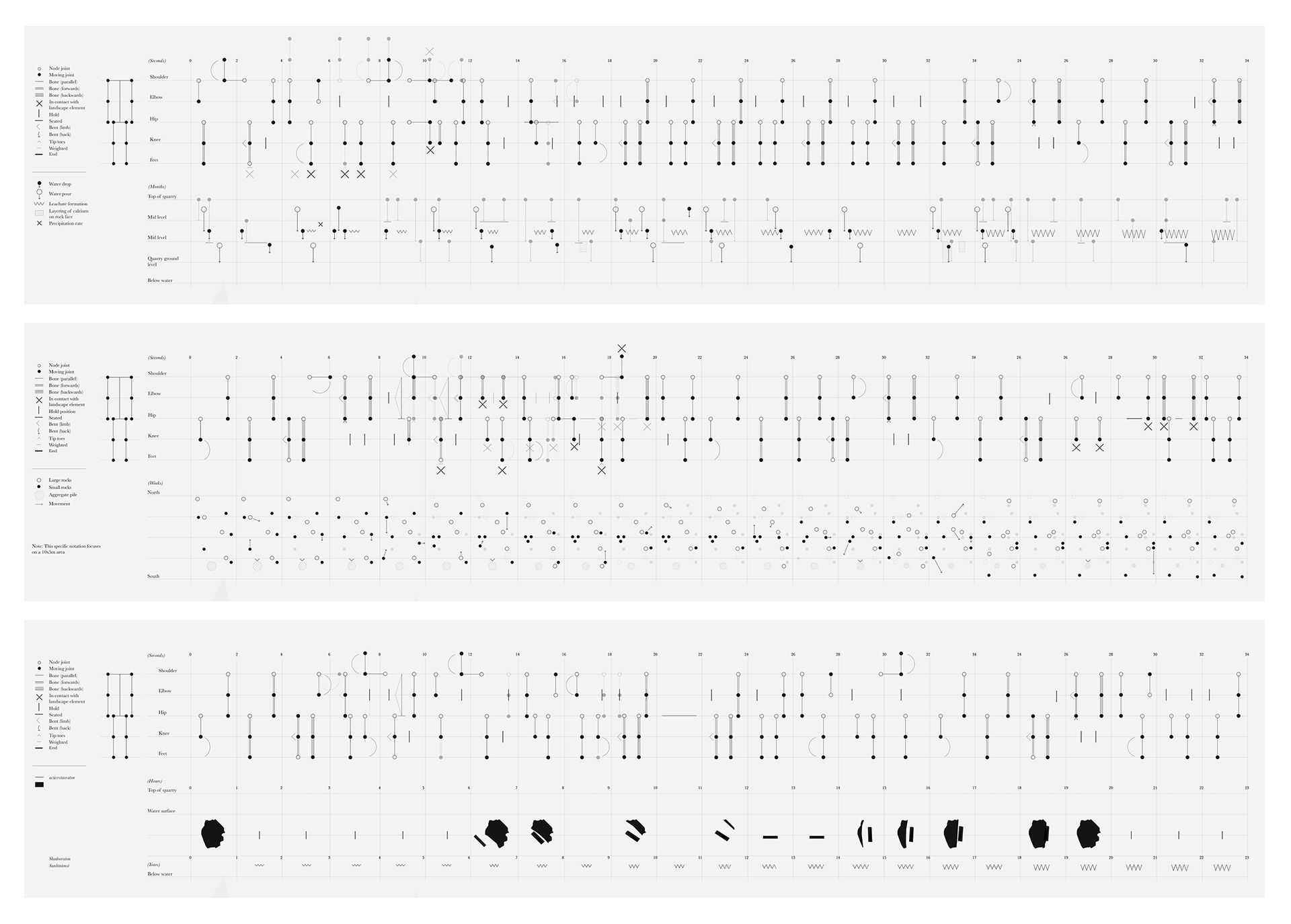
KOOZ How does the project redefine the relationship between body and landscape?
RH The body and the landscape are recognised as being complimentary to one another. Each are in a constant process of transformation through the other. Rather than being independent and defined, the body and landscape are understood to emerge through their interactions with each other. The project shifts away from seeing the body and disabilities as the socially constructed models given to us, and instead understands it as something constantly in process, taking shape through its interactions with other bodies and landscapes.
KOOZ How does the project approach the role of the architect within our society?
RH The project sees the architect as part of an interdisciplinary practice, drawing from disciplines of health, performance and geology to redefine problems and reach solutions based on a new understanding of the issues faced. By investigating the impact of design beyond the conventional scales, the architect is able to examine ‘site’ and ‘subject’ more critically, considering in more depth how the physiology of bodies interacts with their environments in ways beyond what is commonly assumed.
The project’s engagement in performance examines a new method towards environmental awareness, challenging existing means of gathering information through notation and movement. The architect’s role thus rethinks architecture through an understanding of the spaces of performance and choreography, and the choreographies of spaces, bringing to light its influence as a field for critical spatial practice and action.
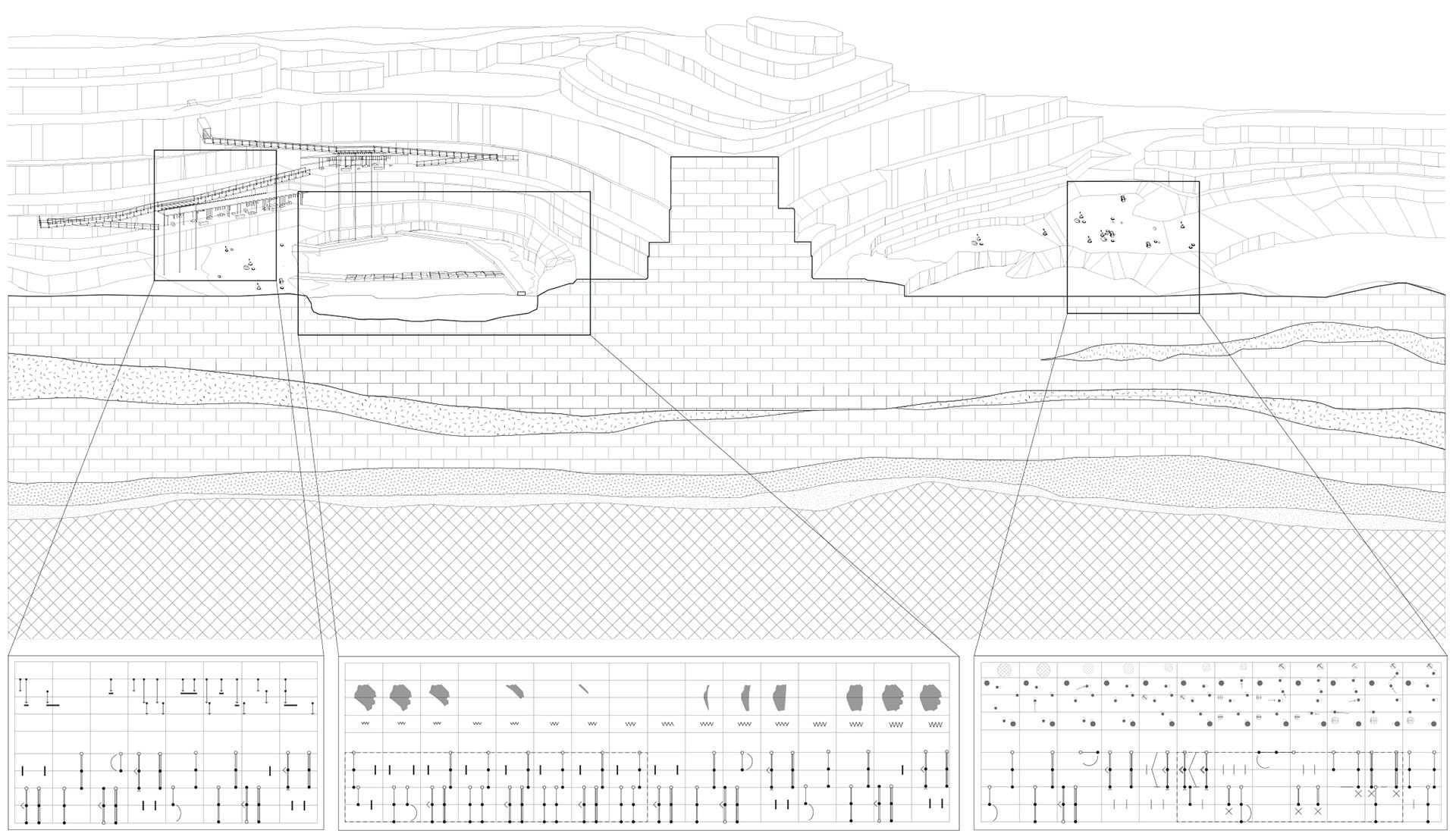
KOOZ What is the architect's most important tool?
RH Curiosity, inquiry and experimentation are key to developing innovative methodologies and creative spaces. By imagining new worlds, exchanging ideas and exploring new potentialities, the architect may push the boundaries of what is possible, creating impactful changes in this ever-changing landscape.


